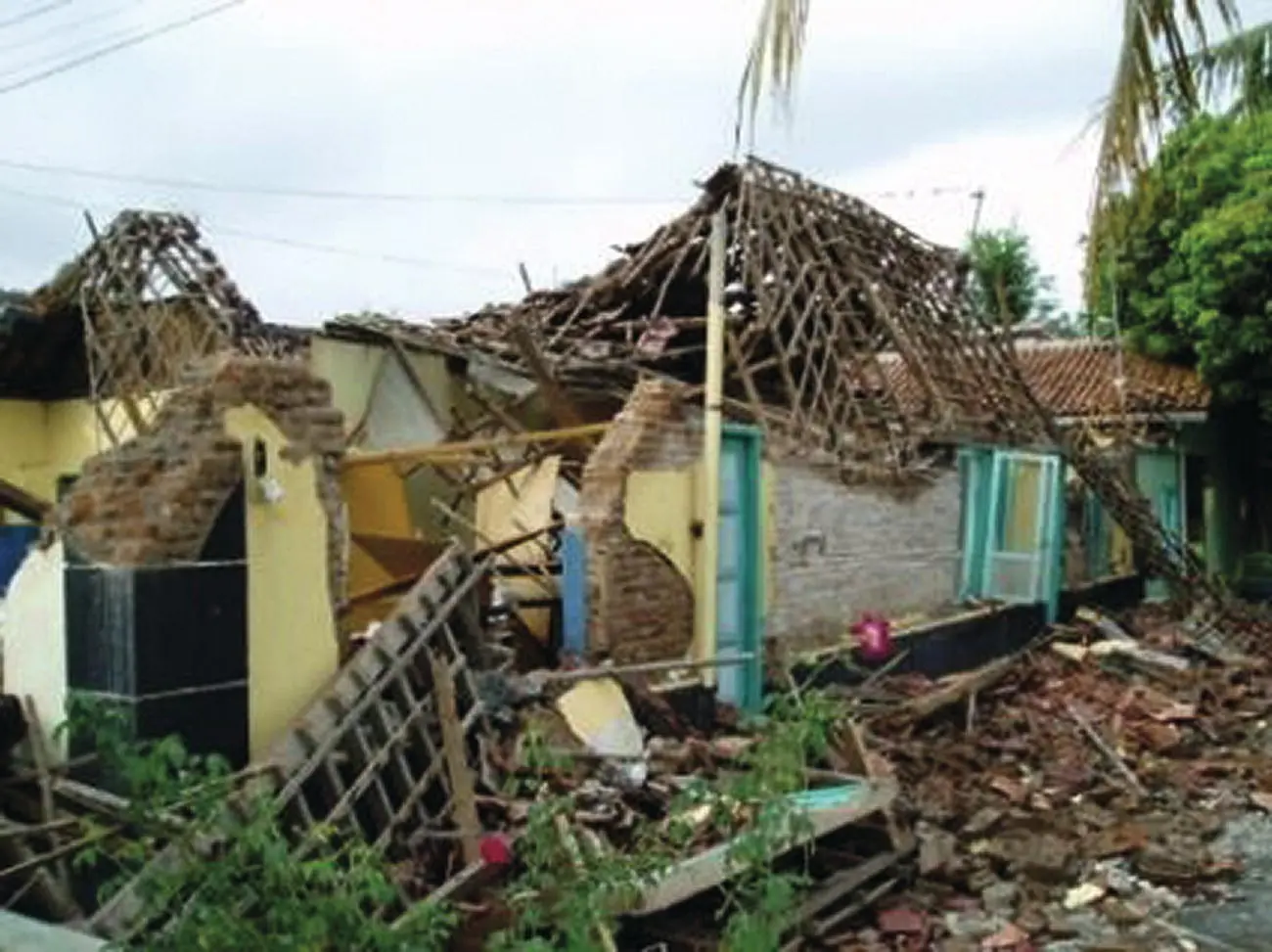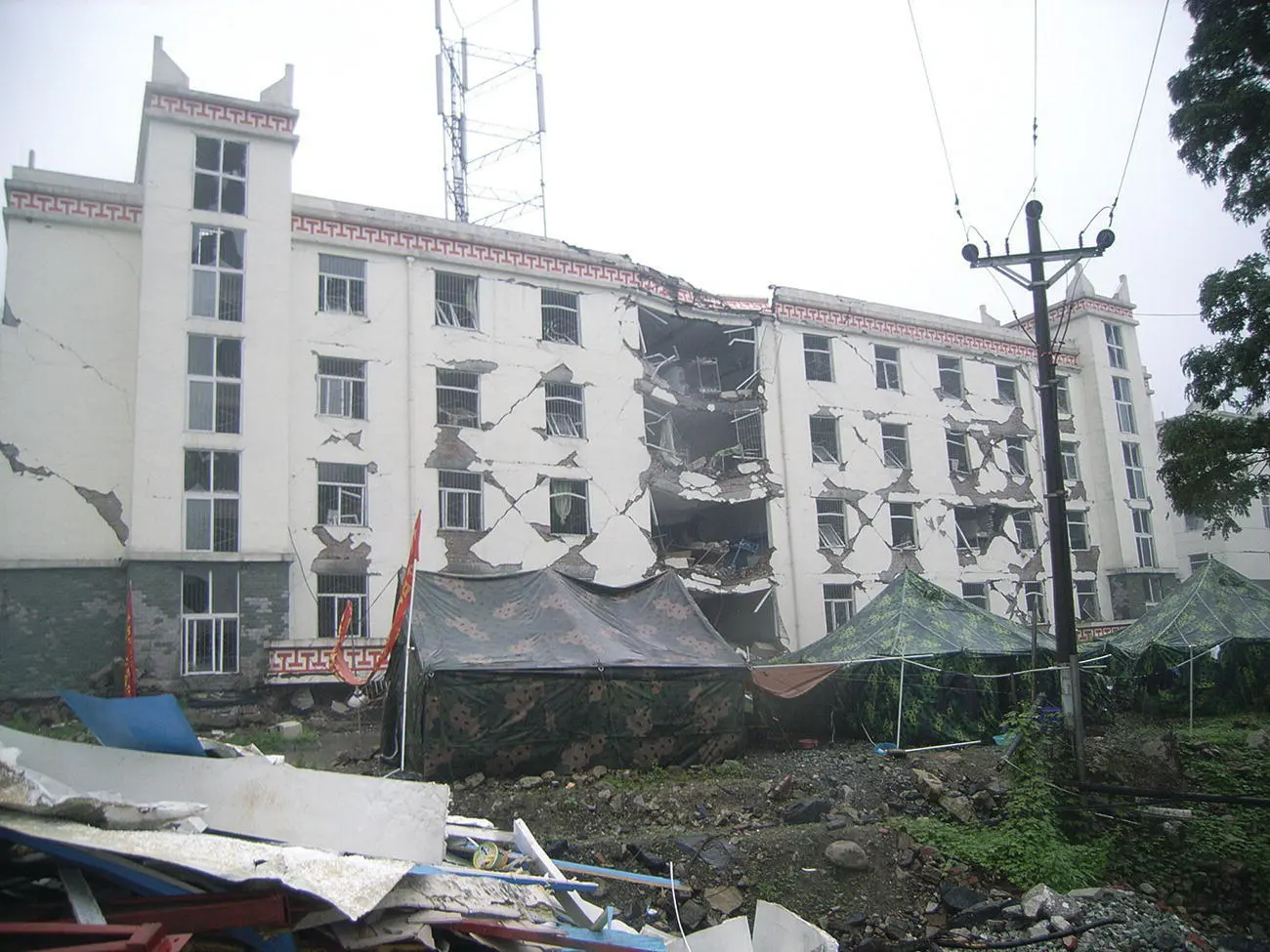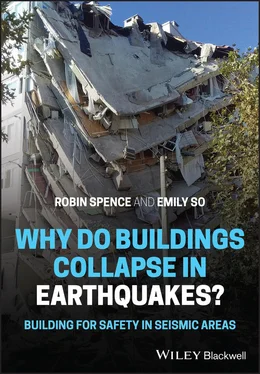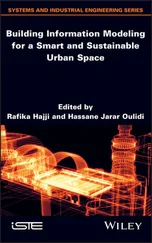1 ...7 8 9 11 12 13 ...16 A factor which certainly also contributed to the high death toll was the inaccessibility of much of the mountainous affected area, as a result of the numerous landslides triggered by the earthquake blocking roads. The emergency services were thus very slow to arrive, and many of the survivors had to walk long distances in difficult terrain to reach a functioning health centre; this also complicated injuries, bringing on infections and resulting in more drastic medical measures. Many more victims with head and chest injuries from falling masonry did not survive until medical help arrived. Unfortunately, search and rescue capability in the crucial early stages was overly concentrated in Islamabad, where few buildings failed, rather than being sent to the epicentral area (So 2009).
There were no official data from which causes of death could be established, but a survey of survivors in 500 families in one of the worst affected neighbourhoods in Muzaffarabad was carried out by our team in conjunction with University of Peshawar (So 2009) to establish patterns and causes of death and injury. This confirmed that, whatever form of construction was used, the major cause of serious injury and death was structural collapse resulting in entrapment.
2.2.5 The 27.5.2006 Yogyakarta Earthquake: Mw6.3, 5778 Deaths
Centred on the densely inhabited Yogyakarta region in eastern Java, this earthquake occurred at 5.53 a.m. local time, with its epicentre in Bantul district. The area of high ground shaking intensity was greater than 200 km 2. More than 156 000 houses and other structures were destroyed, killing 5778 people and seriously injuring more than 40 000. The loss of housing accounted for more than 50% of the total damage, and it has been suggested that the death toll could have been much larger had the earthquake not occurred at a time when many were awake and involved in household tasks outside their houses. Nearly all the deaths and serious injuries which did occur were as a result of the collapse of buildings (So 2009).
The typical house in the affected rural areas (katcha house) is a single‐storey masonry building, with burnt clay brick or concrete block laid in a weak cement or lime mortar ( Figure 2.11). The roof is of timber or bamboo trusses and rafters, supporting timber battens and clay tiles. There are no connections between the roof members and the walls. A minority of more recently built houses (since 1990) are built using confined masonry walls, with RC columns and beams, as described in Chapter 5, but with traditional roof structures. A few are of timber frame construction (EERI 2006b).
The lack of adequate ties between roof and walls, and the lack of out‐of‐plane strength of the walls were responsible for the collapse of many of the katcha houses. The buildings built using confined masonry generally performed better, though the earthquake exposed many failures in jointing and reinforcing such structures (EERI 2006b).
As in the 2005 Kashmir earthquake, there were no hospital data available to establish causes of death and injury, but a survey of survivors in 523 families in 4 of the worst affected districts, sampling 2652 individuals, was carried out by our team in conjunction with Yogyakarta's Gaja Mada University (So 2009) to establish patterns and causes of death and injury. This confirmed, as in the companion survey in Kashmir, that the major cause of serious injury and death was structural collapse resulting in entrapment, with no clear difference between different types of construction. However, in this event, a high proportion of the building occupants moved outside at the onset of the earthquake (67% of those in buildings which collapsed), and this may have saved many lives.

Figure 2.11Collapse of house of traditional construction, Yogyakarta earthquake.
Source: Boen (2016). Reproduced with permission.
2.2.6 The 12.5.2008 Wenchuan Earthquake: Mw7.9, 87 476 Deaths
The Mw7.9 Wenchuan earthquake occurred at 14.28 local time on 12 May 2008, with its epicentre in Wenchuan county in Sichuan Province of China, at a depth of 19 km. It caused a fault rupture of around 240 km along faults which form the boundary between the Longman Shen mountains to the north‐east and the Sichuan basin to the south‐west. This is a densely populated region, and the earthquake was devastating to a large area, affecting more than 250 000 km 2and 30 million people (EERI 2008). Peak ground acceleration exceeding 0.5 g was felt over a wide area. The earthquake resulted in approximately 87 500 deaths (including 17 920 missing people), and 375 000 injuries, and required almost 1.5 million people to be relocated. It was the most lethal earthquake to strike China since the Mw7.5 Tangshan earthquake in 1976 which killed an estimated 242 000 people.
Although most of the deaths were caused by the collapse of buildings, a notable feature of this earthquake was the very large number of slope failures, causing landslides, rock‐falls and mudflows. By one estimate there were more than 15 000 such failures, which resulted in around 20 000 deaths, or nearly 30% of the total (Yin et al. 2009).
Most of the buildings affected by the earthquake were masonry buildings. In the rural and mountainous areas, these were traditional unreinforced masonry (URM) buildings of brick or stone with timber floor and roof structures, which were highly vulnerable to earthquake ground shaking. In the urban areas also many URM buildings existed, often of several storeys, with precast concrete hollow‐core floors and roofs, and this included many school buildings ( Figure 2.12). In the urban areas, one common form of building had a RC ground floor with URM above, while others were of confined masonry construction (EERI 2008). The urban URM buildings did not perform well in the earthquake and there were many partial or catastrophic collapses.
Many of the mixed RC and brick constructions too were seriously damaged, including many ground floor ‘soft‐storey’ collapses. There were some recently constructed RC frame buildings in the larger towns and these were reported to have performed relatively well, and to have resisted collapse in spite of the fact that the ground shaking was much more severe than the levels required by the design codes over most of the area (EEFIT 2008b).
Particularly noteworthy was the tragic collapse of many school buildings. It has been estimated that more than 7000 school classrooms collapsed in the earthquake, and, as children were in school at the time of the earthquake (14.28 local time), that possibly more than 10 000 children died as a result. Often, collapsed school structures were sited next to other relatively undamaged buildings. This led to angry protests by bereaved families, whose only child was often the victim. Protesters blamed both shoddy construction and the government which should have supervised such construction more effectively. Official investigations took place and are said to have identified many design defects, and there have been subsequent changes to the required standards for school construction (Wong 2008).

Figure 2.12Partially collapsed five‐storey masonry middle school building in YingXiu in the Wenchuan earthquake.
Source: EEFIT. Reproduced with permission.
2.2.7 The 12.1.2010 Haiti Earthquake: Mw7.0, Estimated More Than 222 000 Deaths
The Mw7.0 earthquake which struck the Republic of Haiti at 16.53 local time on 12 January 2010 was one of the most destructive in history. It had its epicentre 25 km from the capital city of Port‐au‐Prince, at a depth of 13 km, and very strong to severe ground shaking was felt throughout the city, which had a population of 3 million, and the surrounding region, resulting in collapse or critical damage to more than 300 000 homes. In addition, the Government of Haiti estimated that 60% of the nation's administrative and economic infrastructure was lost, and 80% of the schools and 50% of the hospitals were destroyed or damaged. The death toll was initially given by the Haiti Government as 316 000 (DesRoches et al. 2011) but an estimate of around 220 000 is now widely accepted, although other estimates range from 46 000 to 159 000. This would still mean that death toll as a proportion of the nation's population was greater than in any earthquake in modern times (DesRoches et al. 2011).
Читать дальше














